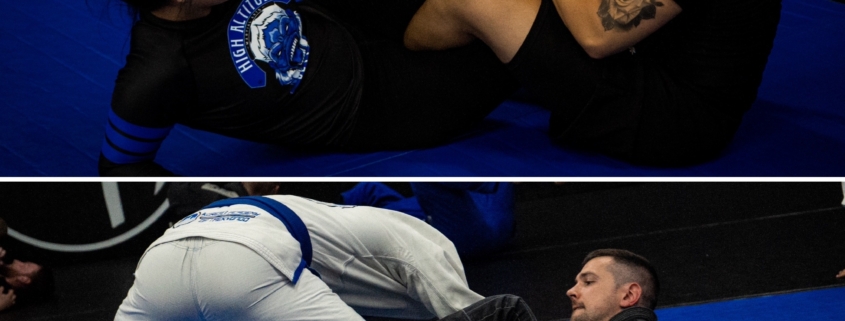JiuJitsu comes in two main variations: Gi and No Gi. While they share the same core principles, they have distinct characteristics that cater to different preferences and skill sets. Let’s explore the key differences between the two:
Attire
Gi Jiu Jitsu: Practitioners wear a traditional uniform called a “Gi,” which consists of a jacket, pants, and a belt. The Gi provides additional grips and allows for a wide range of techniques involving cloth manipulation.
No Gi Jiu Jitsu: In this style, participants wear rash guards and shorts or spats. There’s no uniform to grab onto, which means techniques often rely more on body control and speed.
Grips and Controls:
Gi Jiu Jitsu: The Gi offers various gripping opportunities, such as collar chokes, lapel guards, and sleeve controls. These grips can be advantageous for setting up submissions and controlling opponents.
No Gi Jiu-Jitsu: With no fabric to hold onto, No Gi relies on different types of grips, like wrist control, underhooks, and overhooks. This style emphasizes clinching and controlling the opponent’s body.
Speed and Agility
Gi Jiu Jitsu: Techniques can be slower-paced due to the intricate grips and submissions, making it essential to focus on precision and leverage.
No Gi Jiu-Jitsu: The absence of the Gi allows for faster transitions and a more dynamic style of grappling, emphasizing agility and explosiveness.
Strategy and Adaptation:
Gi Jiu Jitsu: Gi practitioners often develop a strategic game plan around the unique grips and controls of the Gi. This style encourages a methodical approach to submissions and positional control.
No Gi Jiu Jitsu: No-Gi requires adaptability as it relies more on body positioning and quick movements. Strategies often involve maintaining top control, securing leg locks, or creating scrambles.
Cross-Training:
Many Jiu Jitsu enthusiasts choose to train in both Gi and No-Gi to become well-rounded practitioners. Skills learned in one style can often be applied to the other, improving overall proficiency.
In the end, the choice between Gi and No Gi Jiu Jitsu often comes down to personal preference. Some practitioners enjoy the traditional aspect and gripping opportunities of the Gi, while others prefer the fast-paced, submission-focused nature of No Gi. Ultimately, both styles offer valuable skills and can enhance one’s Jiu Jitsu journey. Whether you choose to train in the Gi, No Gi, or both, the key is consistent practice and dedication to improving your skills on the mats.





